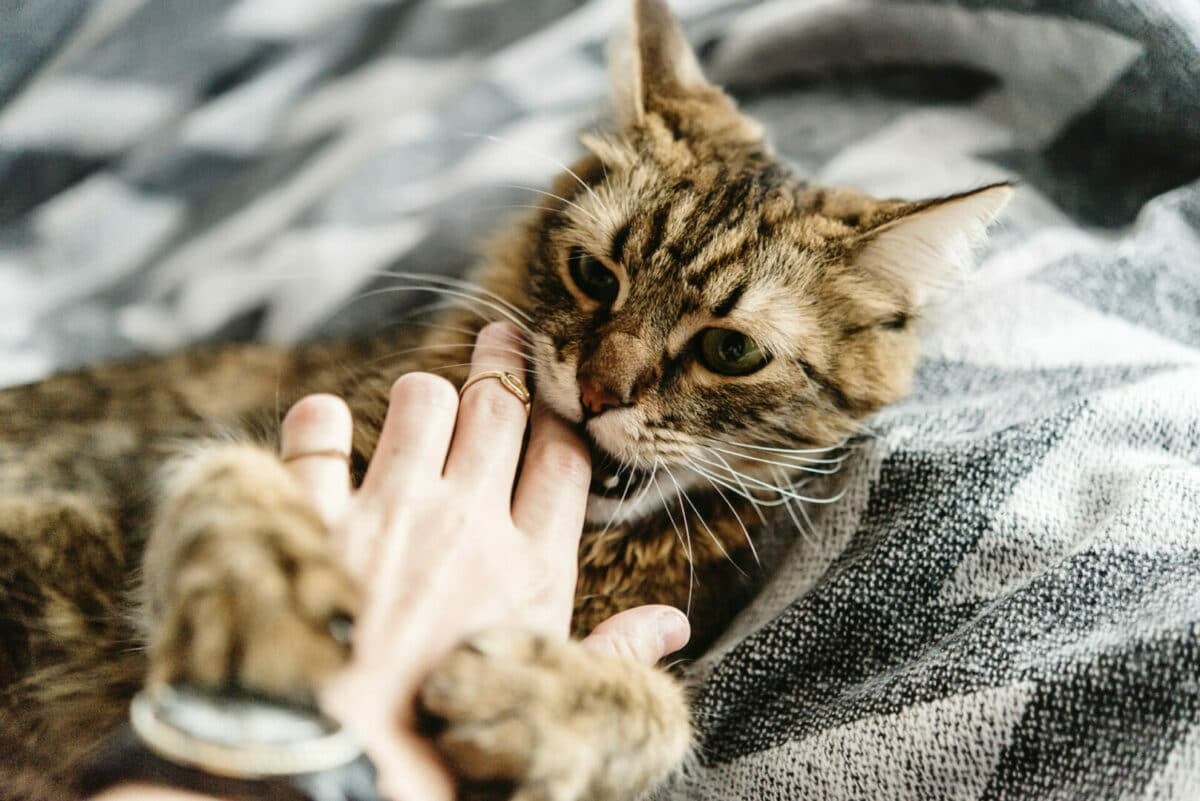Once you have one cat, it’s hard not to adopt them all. But the trick with multi-cat households is making sure everyone gets along. Some cats love having fellow felines to spend time with. Others, however, aren’t as keen about having company. Because cats are feisty and athletic, it isn’t always easy to tell whether two cats are playing or fighting. Knowing the difference, however, is essential for keeping everyone in your house safe and happy.
When two cats go at it, they’re either having fun wrestling a friend, or they’re ticked off and showing aggression. Here are a few ways to tell the difference.
Observe Closely
Two cats playing can often look like two cats fighting, because they usually choose to wrestle or chase each other. Even play wrestling can involve teeth and claws. Some playful kitties even make noises that you’d normally associate with aggression or irritation. If you observe the two cats closely, however, you’ll pick up on subtle ways to tell whether they’re playing or fighting.
Even in the midst of an intense wrestling match, cats use body language to communicate. They’ll use their ears, tail, and muscles to let their partner know if they’re having fun or not.
It might look intense, but things like bunny kicks, biting, and pinning each other to the ground are all part of a playful wrestling match. Cats know how to cause minimal pain while playing.
If those kicks, bites, and pins are accompanied by any of the following body language signals, however, there’s a good chance your cats are actually in a fight.
- Ears are flat
- Tail is puffy
- Body fur is puffed up
- Leaning away from each other when they break apart
- Loud hissing or yowling
Another sign that the cats are fighting is if one cat always seems to be losing or is always the one being chased. Playful cats will usually switch up who gets to be on top and who does the chasing. If one cat is constantly dominating the other and not letting up, their intentions probably aren’t so nice.
Consider Their Daily Relationship
Another hint as to whether your cats are playing or fighting is how they interact when they’re not engaged in a wrestling match. It is extremely unlikely for two cats to go from hating each other to playing with each other in the same day, week, or sometimes lifetime.
If your cats usually prefer to stay away from each other or freak out whenever they’re forced into close contact, don’t expect them to play together. They might tolerate living in the same house, but playing together is outside their comfort zone. If you catch them wrestling, it’s most likely because they’re ticked off.
Alternately, two cats who are often seen grooming each other, cuddling, or peacefully sharing resources are probably happy friends. Playing together would be a natural part of their friendly relationship.
What To Do If Your Cats Are Fighting
If you’ve determined that your cat’s behavior has crossed the line from playful to aggressive, it’s important to separate them as soon as possible. When cats mean business, they can easily cause each other physical harm. Letting them fight it out will not help their relationship, and it creates a dangerous situation for everyone involved.
What you don’t want to do, however, is reach in and pull them apart. This will only put you at risk of being bitten or scratched. Instead, make a loud noise in hopes of startling them apart. If that doesn’t work, toss something soft, like a pillow, into their fight. If you can catch the fight before it gets too intense, you might be able to distract them with a favorite toy or treat.
Once you have the cats apart, separate them farther so they don’t jump right back into their fight. You’ll need to help them work out their differences if you want to live in a peaceful multi-cat household. Start by making sure they each have their own spaces including separate feeding stations, litter boxes, and places to lounge.
You can also encourage friendly interaction through positive reinforcement. When the cats are in the same room or interacting in a friendly manner, encourage that good behavior with praise and treats. If tensions remain high, it’s best to work with an experienced feline behaviorist.






